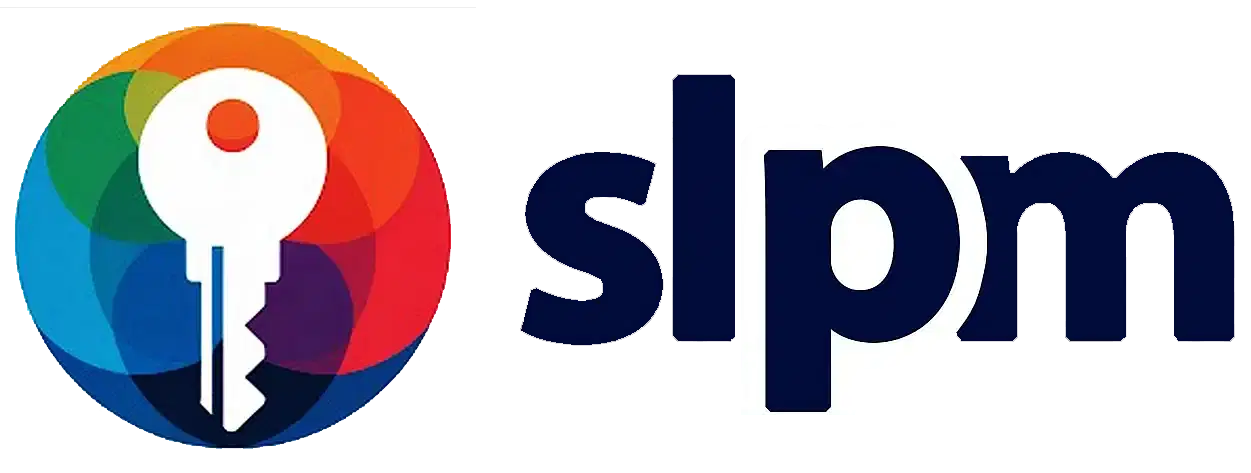TL;DR
Preparing for a rental survey requires legal compliance, thoroughness, and communication. Owners should notify tenants, clarify the inspection’s purpose, use a checklist, and consult past data. Documenting findings, understanding local regulations, and engaging tenants ensures a transparent and efficient process.
Navigating the intricacies of rental surveys is an essential task for property owners, and it demands a blend of professionalism, preparation, and respect. SLPM Property Management understands these complexities and offers insights into best practices that can facilitate a smoother, more efficient survey process. This guide aims to provide property owners with a comprehensive overview, ensuring their surveys not only adhere to legal standards but also foster trust and cooperation with tenants.
1. Provide Proper Legal Notice

In the realm of property management, respect and transparency reign supreme. To this end, it’s essential to provide your tenants with an advance notice prior to any survey. Depending on the stipulations of local regulations and specifics detailed in the lease agreement, a notice window ranging between 24 to 48 hours is often the norm. This not only fulfills legal obligations but also showcases a genuine respect for the tenant’s right to privacy and their daily routines. Such advanced communication provides tenants with ample time to prepare their living space and, if they wish, to be present during the survey, fostering a climate of mutual respect and cooperation.
2. Clarify the Purpose of the Survey
Effective communication is the foundation of a successful rental survey. It’s crucial that tenants fully understand the reasons behind an upcoming survey. Being transparent about the purpose – whether it’s a regular, scheduled check, a more in-depth exploration regarding a specific issue, or an end-of-lease assessment – helps alleviate potential concerns or apprehensions a tenant might have. This clarity also ensures that tenants can prepare accordingly, knowing what to expect, which in turn can lead to a smoother, more efficient process for both parties.
Moreover, when tenants are aware of the reasons and understand the importance of these surveys, it cultivates trust. Trust is a fundamental aspect of the landlord-tenant relationship. When a tenant feels they’re kept in the loop, it reinforces the notion that the survey isn’t merely a formality or an intrusive check-up but a necessary step to ensure the property’s maintenance and their own comfort. Open dialogue about the survey’s purpose paves the way for cooperation, understanding, and mutual respect.
3. Have a Prepared Checklist
To ensure meticulousness and consistency, a well-thought-out checklist is indispensable. Such a list provides a structured approach to the inspection, ensuring no critical areas are overlooked. The checklist should be broad, covering:
- A comprehensive evaluation of the property’s cleanliness, looking beyond superficial tidiness to gauge long-term maintenance.
- Safety protocols, ensuring devices like smoke detectors and carbon monoxide alarms are not just present but fully functional.
- A keen eye for any damages or wear and tear that might not have been previously reported, which can save on future repair costs.
- A thorough check of household appliances, plumbing systems, and electrical setups to ensure tenant comfort and safety.
- A meticulous assessment of the interior, including carpets, walls, windows, and doors, ensuring the property’s longevity and aesthetic appeal.
- A proactive scan for signs of pests or mold, which if caught early, can prevent health hazards and extensive remediation costs.
4. Review Previous Survey Reports
The value of historical data, especially in the context of property surveys, cannot be overstated. Previous survey reports offer a roadmap of the property’s past condition, highlighting areas that may have been problematic before or drawing attention to recurring issues. By revisiting these past reports, property managers and owners can identify patterns, assess if certain problems have been addressed adequately, or determine if preventive measures taken in the past have been effective. This historical perspective not only aids in pinpointing specific areas of concern but also helps in forecasting potential future issues.
Moreover, consistency in surveys is a cornerstone of effective property management. By comparing current findings with previous reports, property owners can ensure that inspections are consistent in their depth and focus. This consistency ensures that no stone is left unturned and that tenants are held to the same standards throughout their tenancy. Additionally, having well-documented past reports can be immensely beneficial in discussions or disputes with tenants, offering a clear and unbiased record of the property’s evolving condition.
5. Be Professional and Respectful
Professionalism is a keystone in any business interaction, and property surveys are no exception. The manner in which inspections are conducted speaks volumes about the respect and consideration a property manager or owner holds for their tenants. Dressing appropriately, arriving punctually, and conducting oneself with decorum are fundamental aspects that should never be overlooked. It’s essential to remember that while the property may belong to the owner, it’s the tenant’s current home. Ensuring that all interactions are carried out with the highest degree of professionalism establishes a rapport and eases any apprehensions the tenant might have about the inspection.
Equally paramount is the practice of respect. Basic etiquettes, such as knocking before entering or waiting for a tenant’s acknowledgment, can go a long way in fostering a harmonious relationship. Moreover, while the legalities might dictate certain rights, making an extra effort to accommodate the tenant’s schedule or preferences whenever possible showcases a genuine care for their comfort and privacy. Balancing the necessities of the survey with the rights and feelings of the tenant can result in a more productive and less intrusive process for all parties involved.
6. Take High Quality Photos

In today’s rapidly advancing digital age, where technology permeates every facet of our lives, visual documentation has unmistakably risen as a foundational pillar in the realm of effective property management and comprehensive due diligence. As property managers and owners navigate through the intricate process of surveys, they may invariably encounter a spectrum of damages, potential challenges, or specific zones within the property that cry out for immediate or future repairs. In such instances, the act of meticulously capturing detailed, high-resolution photos transcends mere documentation—it becomes an essential tool. These meticulously taken images serve as a crystal-clear, unbiased record of the property’s current state. Beyond that, they play a pivotal role in streamlining the repair and maintenance process, acting as an irrefutable point of reference in potential disputes or misunderstandings. They’re also instrumental in facilitating transparent communication between all stakeholders, be it tenants, repair crews, or potential future renters. Moreover, with the ever-evolving landscape of property management, having such visual archives proves invaluable for future reference, setting benchmarks, and ensuring consistent, top-tier maintenance standards as time progresses.
7. Encourage Tenant Feedback
Tenant feedback is a goldmine of valuable insights. Living day in and day out in the property, tenants experience the small quirks and nuances that might escape a property manager’s occasional visit. By actively promoting open dialogue during inspections, property owners and managers can tap into firsthand observations about the property’s living conditions, potential wear and tear areas, or even suggestions for improvements. This not only aids in proactive maintenance but also makes tenants feel valued and heard.
Moreover, fostering an environment where tenants feel comfortable sharing their thoughts and concerns contributes to a sense of community within the rental property. It’s not just about gathering information; it’s also about building trust. When tenants see that their feedback is actively sought and acted upon, it nurtures a more cooperative landlord-tenant relationship. This mutual respect and understanding can lead to longer tenancies, timely reporting of issues, and overall smoother property management operations.
8. Provide a Follow-Up
The survey doesn’t end when you walk out the door. Should there be issues requiring attention or action points derived from the survey, a prompt follow-up is essential. By clearly communicating the next steps, expected timelines, and any potential inconveniences, you can manage expectations, keep tenants informed, and demonstrate a proactive approach to property management.
9. Document Everything
In property management, the adage “the devil is in the details” rings particularly true. Meticulous documentation serves as the backbone of effective oversight, providing a comprehensive record of every survey, tenant interaction, and potential area of concern. Whether jotting down the condition of specific areas, cataloging potential wear and tear, or keeping a log of tenant feedback, these records form a crucial database. This repository not only aids in tracking the evolution of the property over time but also supports informed decision-making, helping property managers prioritize repairs, renovations, or interventions.
Beyond its immediate utility, thorough documentation also plays a pivotal role in safeguarding the interests of both the property owner and the tenant. In instances of disputes or disagreements, having a well-maintained record offers clarity and can be instrumental in resolving issues amicably. Furthermore, from a legal perspective, having exhaustive documentation can prove invaluable, providing evidence if ever needed for legal proceedings or insurance claims. In essence, consistent and detailed documentation is the cornerstone of transparency, accountability, and efficient property management.
10. Stay Updated on Regulations

Property management operates within a matrix of intricate legal guidelines that are subject to change based on local, regional, or even national considerations. Keeping abreast of these changes is essential for property owners. By ensuring they are up-to-date with the latest rules and regulations related to rental surveys, property owners can confidently conduct surveys without inadvertently overstepping boundaries. This proactive approach to staying informed not only guarantees compliance but also instills a sense of trust in tenants, demonstrating a commitment to upholding their rights and providing a fair living environment.
Furthermore, a keen awareness of legal stipulations acts as a safeguard against potential legal complications. Fines, disputes, or lawsuits resulting from unintentional violations can be both costly and damaging to a property owner’s reputation. By regularly reviewing and staying educated on rental property regulations, property owners position themselves to navigate the landscape of property management with professionalism, ensuring their operations remain above board and fostering an environment of trust and integrity with their tenants.
In Conclusion
Ensuring the optimal condition of a rental property requires meticulous planning and a thorough survey process. From giving proper notices and having a detailed checklist, to fostering respectful communication with tenants and adhering to local regulations, every step is crucial. Yet, managing all these can be overwhelming for individual property owners. That’s where SLPM Property Management comes into play. With our expertise and experience, we streamline the survey process, ensuring it’s done both swiftly and in full compliance with legal requirements. Why shoulder the burden alone when SLPM Property Management can handle it for you? Get started with us today and safeguard your property investment with professionals you can trust.




